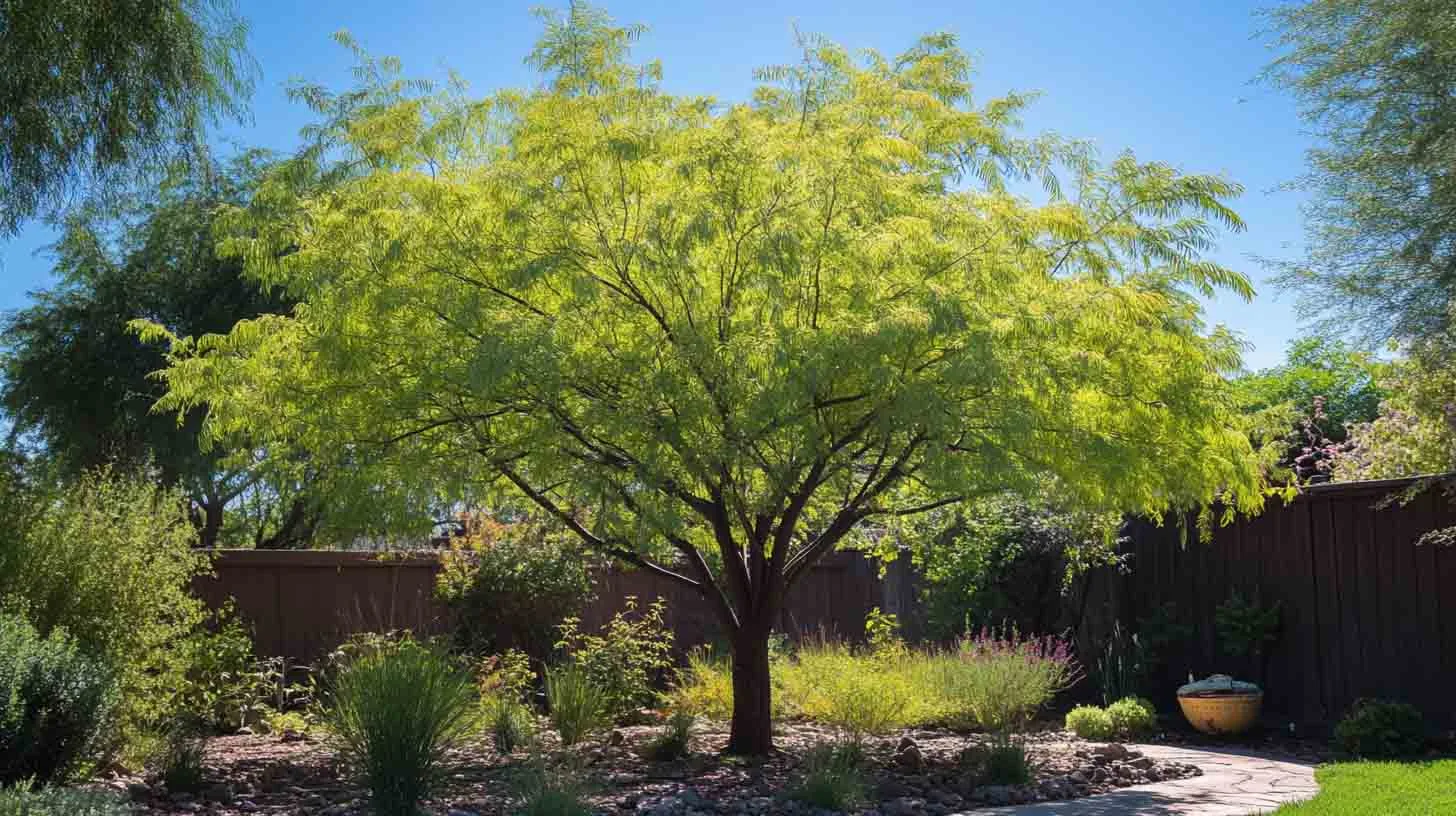If you live in Arizona, you know the sun doesn’t mess around. I’ve had more plants wilt in one summer than I care to admit.
But that doesn’t mean your backyard has to look like a dried-up patch of desert!
There are small trees that love the heat, add shade, and don’t guzzle water like crazy.
Whether you’ve got a tiny patio or a modest backyard, you can still bring in color, height, and texture, with the right trees.
Let me show you 8 small trees perfect for Arizona backyards, ones I’ve seen survive (and even thrive) in our hot, dry climate.
1. Desert Willow (Chilopsis linearis)
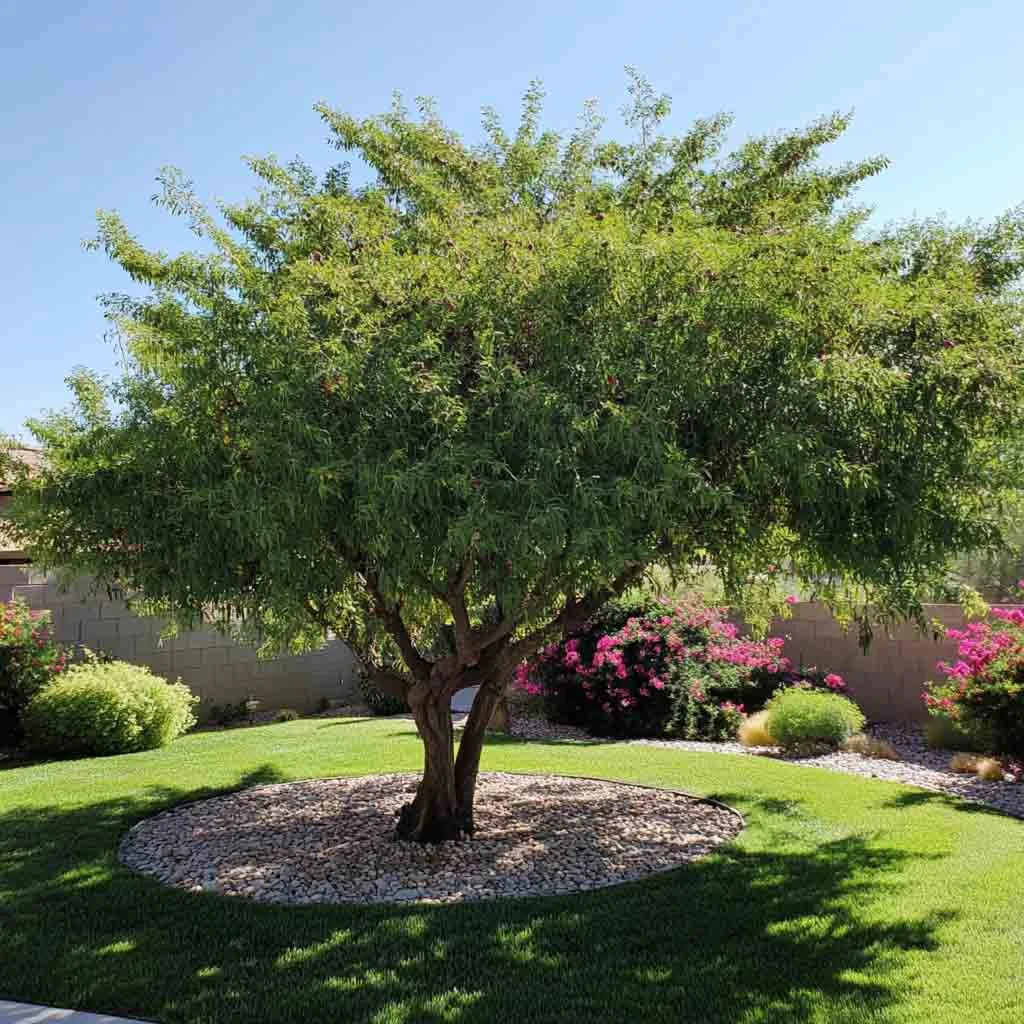
This is one of my absolute favorites, and not just because of the gorgeous blooms!
The Desert Willow has a soft, airy look that feels tropical even though it’s a total desert warrior. It can grow to about 15–25 feet, but you can prune it to stay smaller if needed.
- Blooms: Trumpet-shaped purple-pink flowers all summer
- Water needs: Very low once established
- Bonus tip: Hummingbirds go crazy for these flowers
- Best for: A soft, flowy accent tree with light dappled shade
I planted one near my patio, and now it’s my favorite spot to have coffee in the morning.
2. Palo Brea (Parkinsonia praecox)
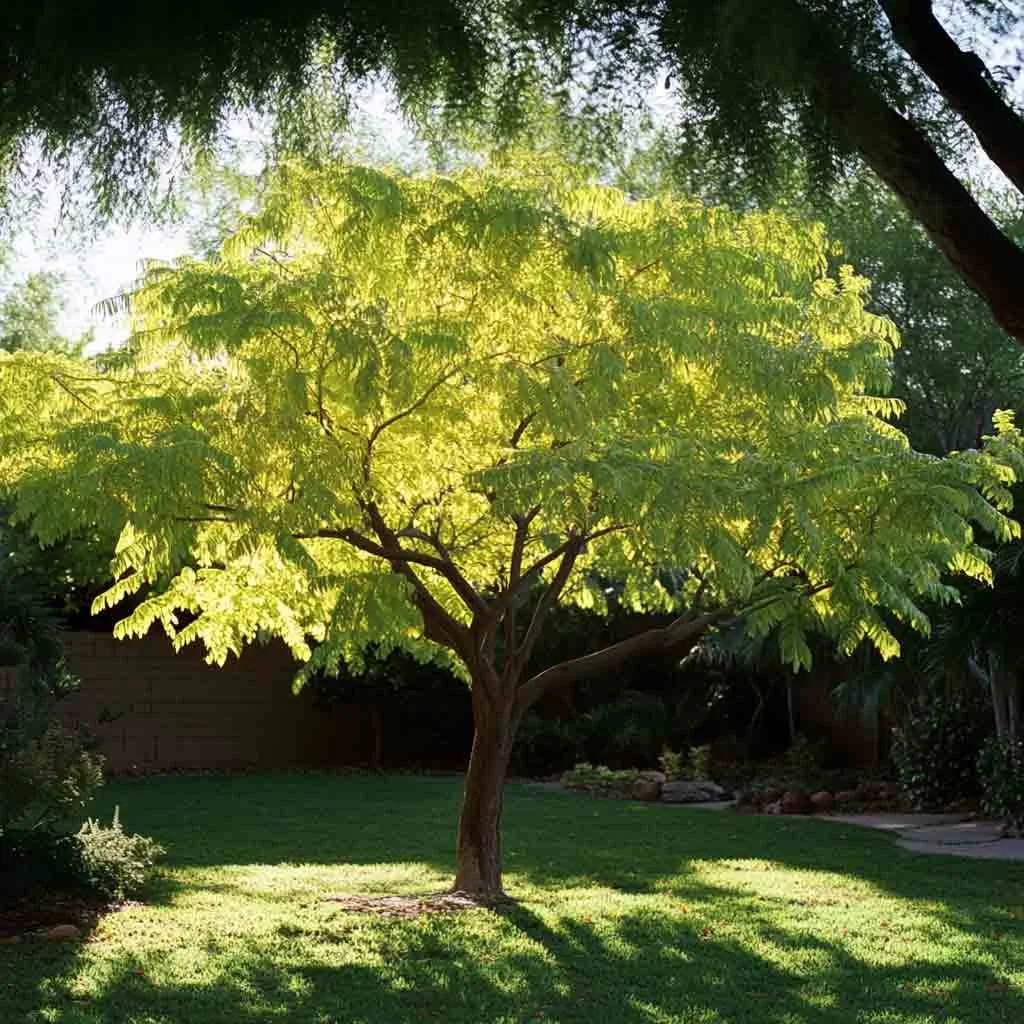
If you’ve never seen one of these, you’re in for a treat. Palo Brea has an almost alien look, with smooth green bark, funky twisted branches, and yellow blooms in spring.
It usually grows up to 20 feet, but with pruning, you can keep it tidy and compact.
- Bark: Bright green and photosynthetic
- Flowers: Yellow blooms in spring
- Drought-tolerant: Very
- Look: Sculptural, modern, and bold
This tree makes a big visual statement even when it’s not blooming.
3. Texas Mountain Laurel (Dermatophyllum secundiflorum)
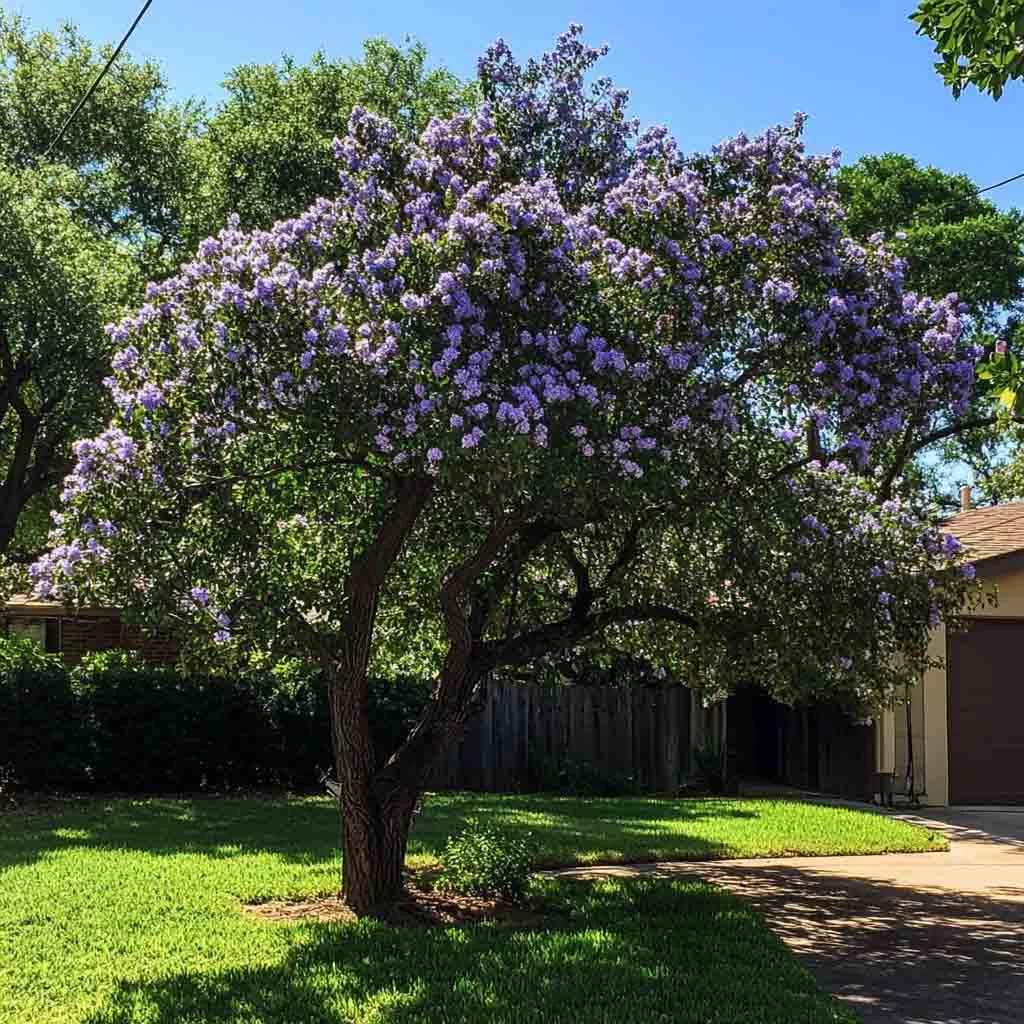
If you want color and fragrance, Texas Mountain Laurel is a dream. It stays naturally small (around 8–15 feet), so it’s perfect for narrow spaces or as a corner feature.
- Flowers: Purple clusters with a grape soda scent (yes, really)
- Evergreen: Stays green all year
- Water-wise: Once established, it’s super tough
- Growth: Slow but steady
Mine bloomed the first spring after planting, and it smelled like a candy store in my backyard.
4. Red Push Pistache (Pistacia x ‘Red Push’)
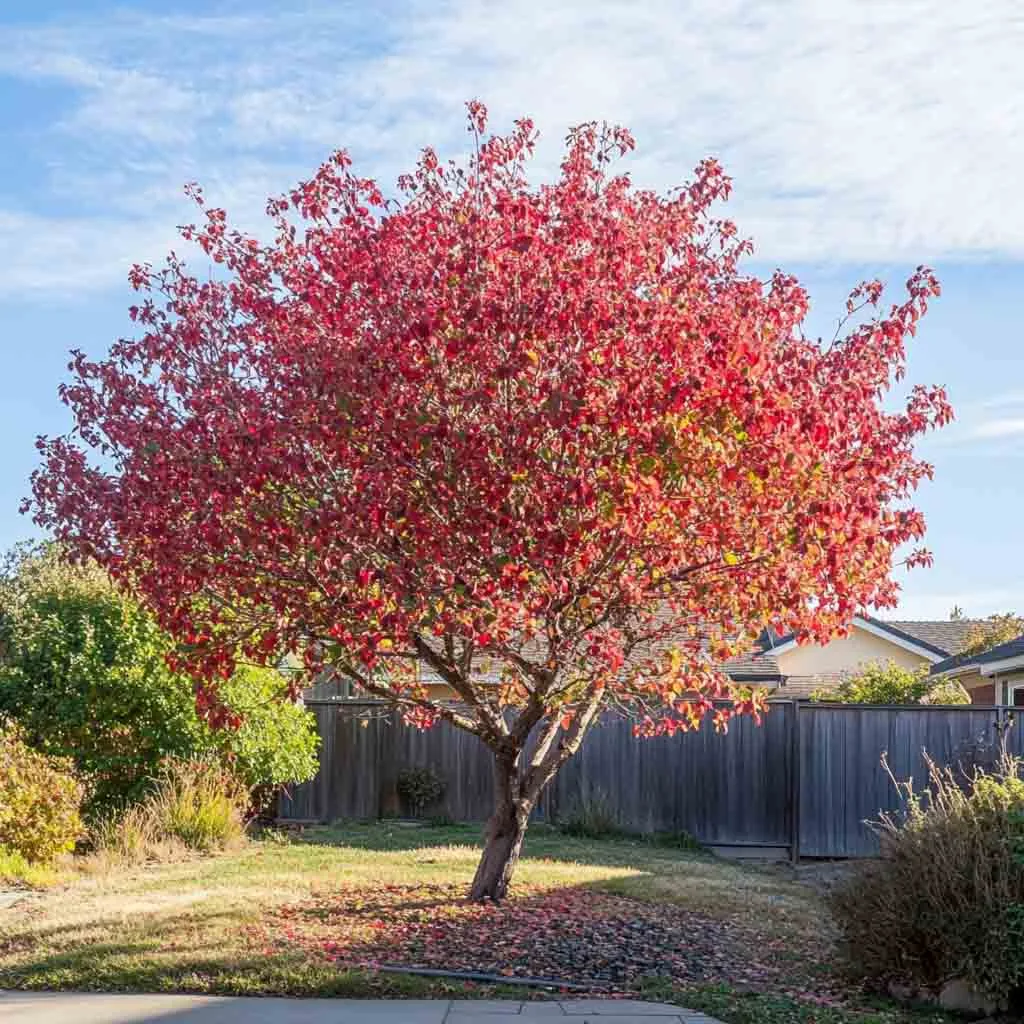
Looking for something a bit more traditional, with fall color? The Red Push Pistache is a hybrid that’s more heat-tolerant than the standard pistache tree.
It grows up to 20–25 feet, but again, you can prune and shape it. It’s a deciduous tree, which means you’ll actually get fall color, a rare treat in Arizona!
- Fall foliage: Orange-red hues in autumn
- Low water: Drought-resistant once mature
- Great for: Seasonal contrast in desert landscaping
I love mixing this with evergreen trees for some year-round interest.
5. Ironwood Tree (Olneya tesota)

This one’s for those of you who love native plants and want something tough as nails.
Ironwood trees are super slow growers, but incredibly hardy. Their gray-green leaves and smooth gray bark blend right into a desert landscape. Mature height is about 15–25 feet, but they grow very gradually.
- Native to Sonoran Desert
- Blooms: Pale purple flowers in spring
- Low mess: Very little leaf or flower drop
- Shade: Light, filtered shade
It’s not flashy, but it’s a quiet, beautiful presence in any yard.
6. Chaste Tree (Vitex agnus-castus)
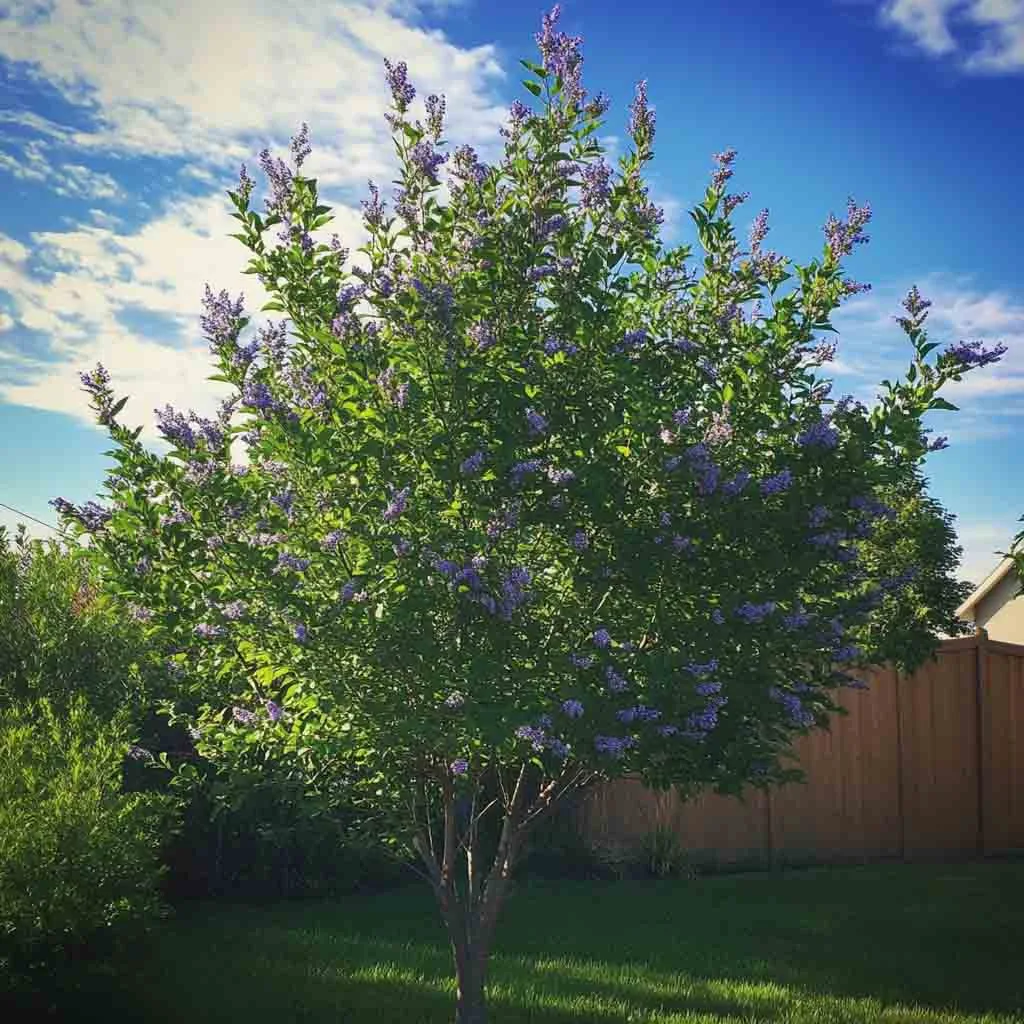
If you love that lush, Mediterranean look, Chaste Tree might surprise you. It handles Arizona heat better than most people I know!
With its long spikes of purple-blue flowers, this multi-trunk tree brings a soft and romantic vibe to your space.
- Height: Around 10–15 feet
- Blooms: Summer into fall
- Attracts: Butterflies and bees
- Fragrance: Light and fresh
I planted this near a gravel path and it turned into a magical blooming border
7. Desert Museum Palo Verde (Parkinsonia x ‘Desert Museum’)
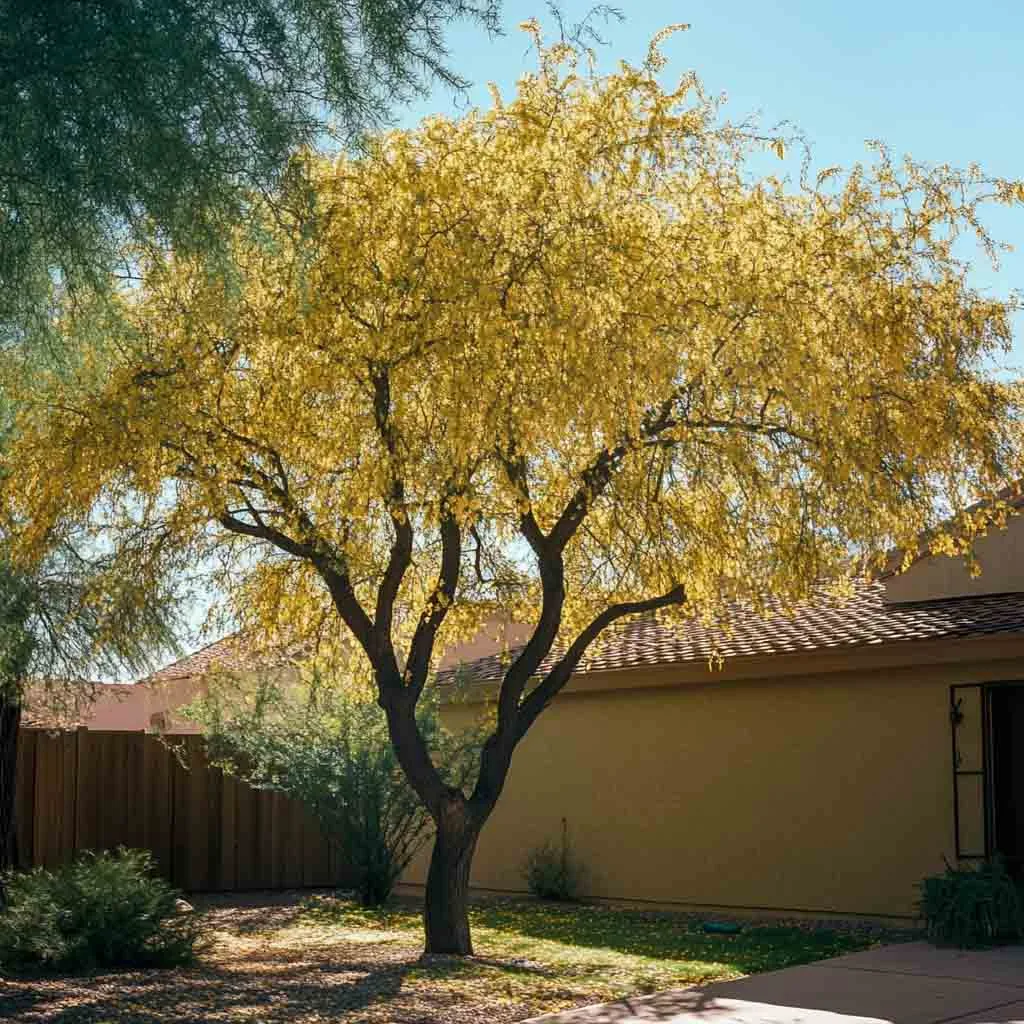
Now, if you want a show-stopper that still fits in a small yard, this one is a no-brainer.
The Desert Museum Palo Verde has bright yellow blooms that last months, and its green bark adds year-round color. It’s thornless too, unlike other palo verdes.
- Height: Up to 25 feet, but manageable with pruning
- Bloom time: Spring and summer
- Fast-growing: Establishes quickly
- Thornless: No painful surprises
This is the one I recommend most often to friends starting their desert garden journey.
8. Bottle Tree (Brachychiton populneus)
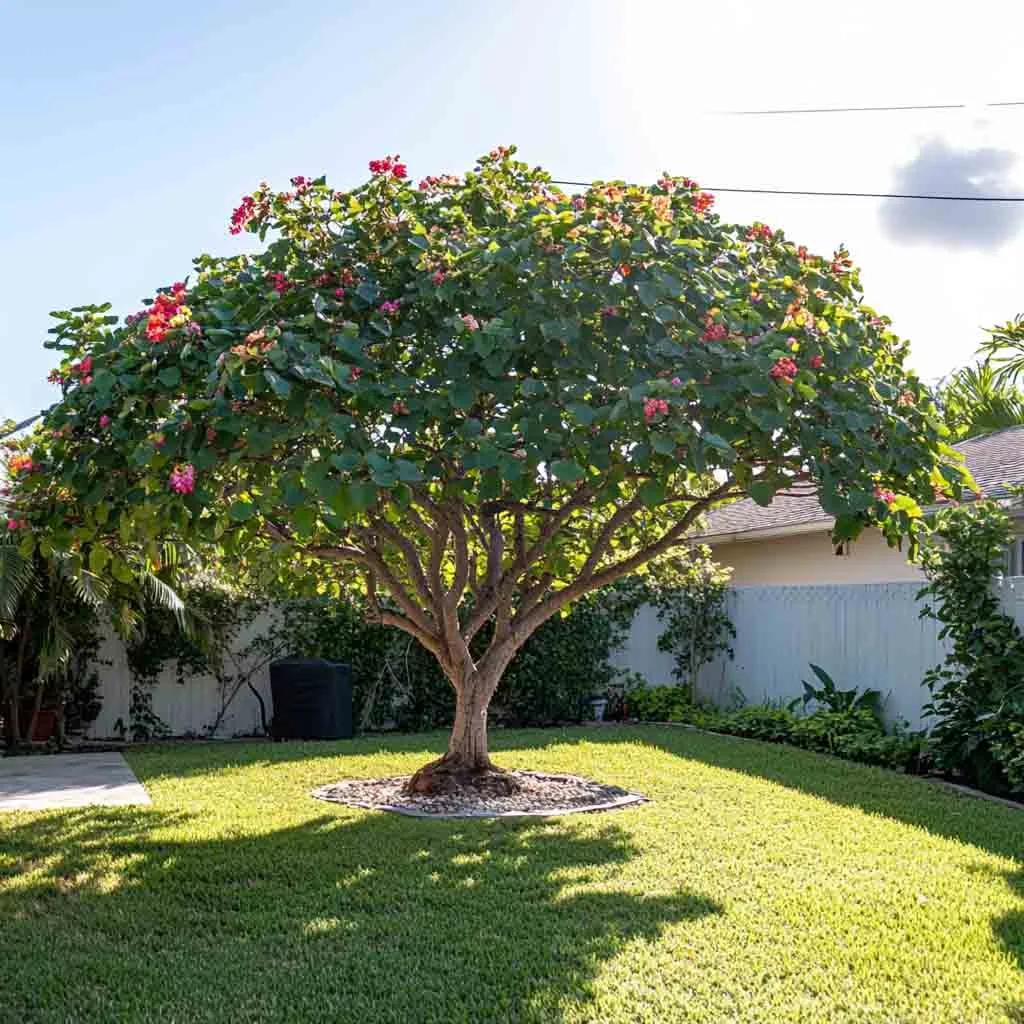
If you like something a little different, the Bottle Tree is quirky in the best way. With its smooth bark and bottle-shaped trunk, it’s definitely a conversation starter.
It thrives in hot, dry climates and grows up to 20 feet tall, but doesn’t spread out too wide.
- Canopy: Narrow and upright, great for small spaces
- Drought-tolerant: Needs minimal water
- Unique feature: Swollen trunk stores water
- Growth rate: Moderate
It’s a fun and funky tree that adds personality to minimalist or modern yards.
FAQ: Small Trees For Arizona Backyards
What’s the best time to plant small trees in Arizona?
The best time is fall or early spring. This gives roots time to settle in before the extreme summer heat.
Do these trees attract pests?
Most of them are resistant to pests, especially the native and desert-adapted ones. Just avoid overwatering, which can attract unwanted bugs.
How often should I water my tree?
Start with deep watering once or twice a week when it’s young. Once established (after 1–2 years), many only need water every two weeks or less.
Can I grow these trees in containers?
A few, like Texas Mountain Laurel and Chaste Tree, do well in large pots, especially if you’re in a rental or have a patio.
Do I need to fertilize desert trees?
Not really. Most desert trees do just fine in native soil. But a light feeding in early spring can boost growth if needed.
Final Thoughts
Just because you live in a hot, dry climate doesn’t mean your yard has to be bland.
These small trees for Arizona backyards prove you can have shade, beauty, and color without constant watering or maintenance.
Pick one, or two, that suits your vibe, and give your yard a little love. Trust me, it’s worth it.
Happy planting, friend!

